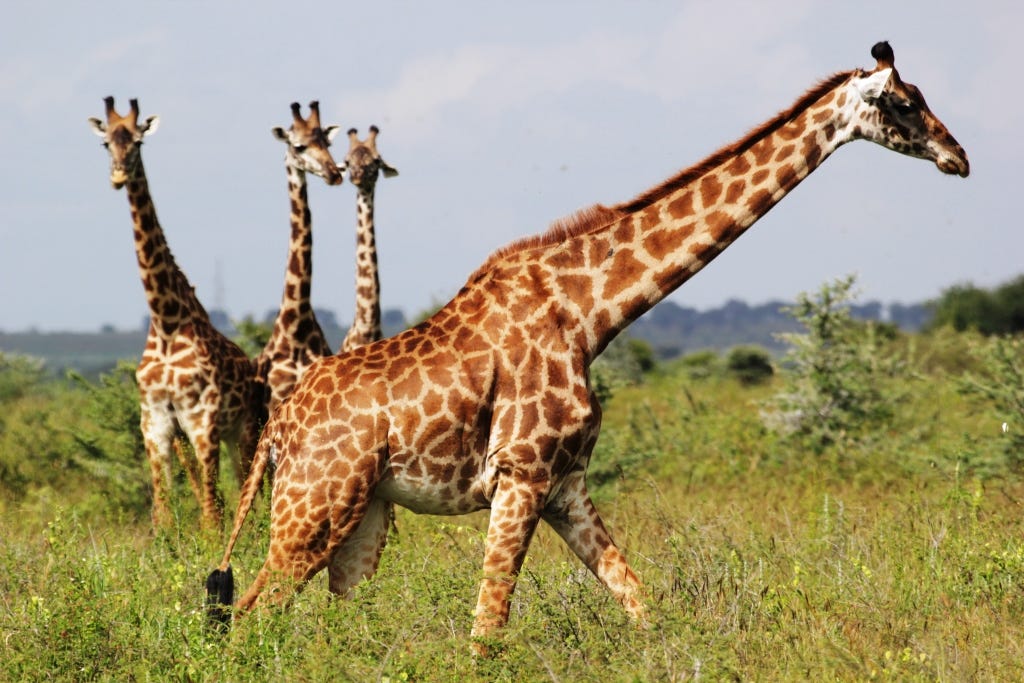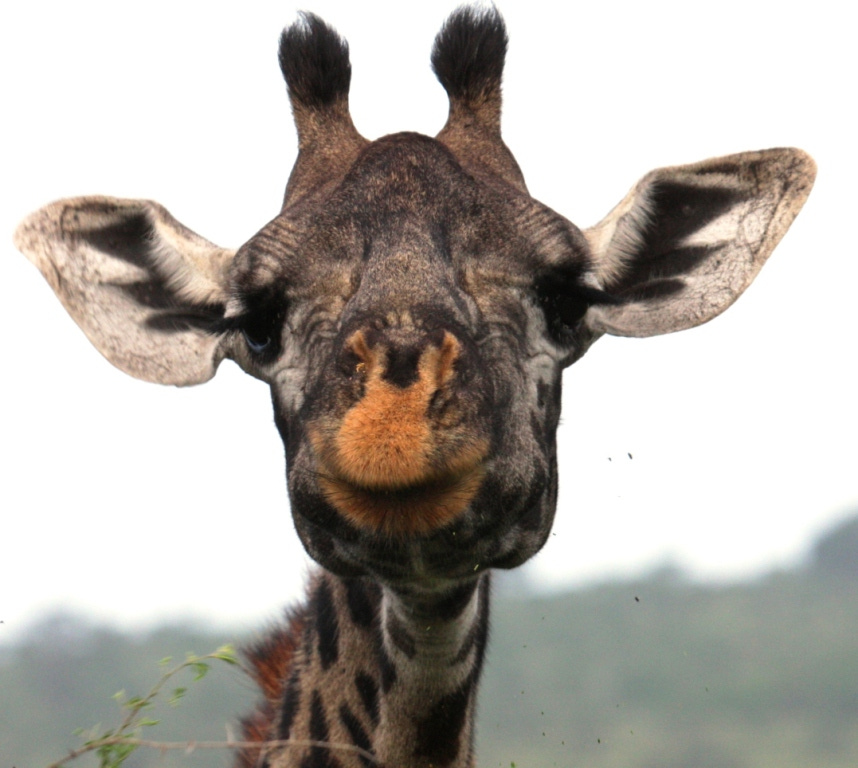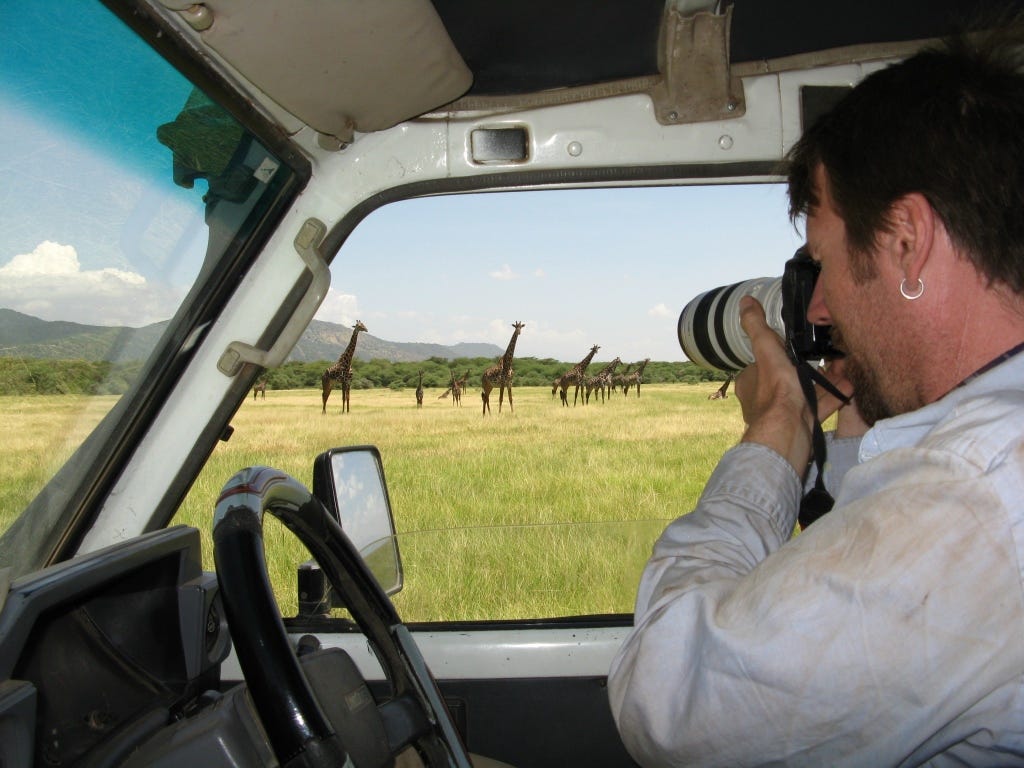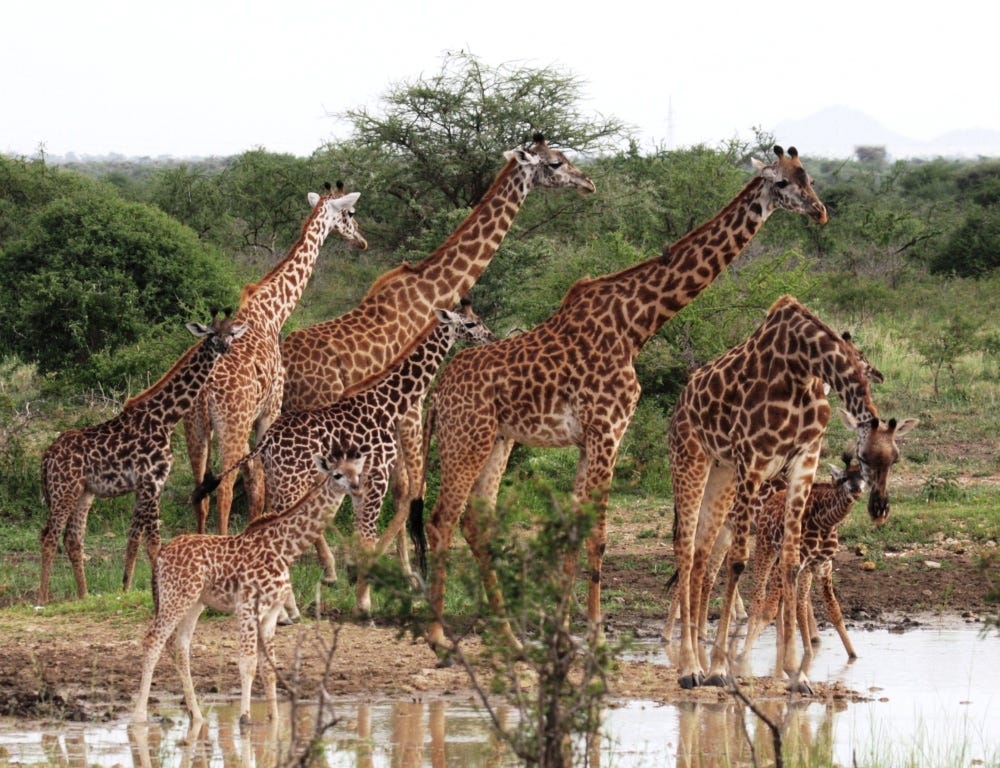By Jordan Schaul | National Geographic | June 17, 2014
It is amazing that the tallest and arguably most elegant mammal on Earth has been so overlooked and understudied by the scientific and conservation community to date. Considering the precipitous decline of giraffe populations in recent years, it is also amazing that we are just now celebrating giraffe and advocating for their preservation on a...
June 17, 2014
Masai giraffe, Tanzania (Courtesy of Wild Nature Institute)
It is amazing that the tallest and arguably most elegant mammal on Earth has been so overlooked and understudied by the scientific and conservation community to date. Considering the precipitous decline of giraffe populations in recent years, it is also amazing that we are just now celebrating giraffe and advocating for their preservation on a global scale.
Most would agree that the giraffe has never been elevated to the status of iconic species like the elephant, panda, or killer whale, but the giraffe is justifiably deserving of much respect and admiration.
Really, few animals are as charismatic as the giraffe or as spectacular to watch in the wild. There is no other animal in the world even remotely similar to the modern-day long-necked giraffe, which is found only in sub-Saharan Africa.
The giraffe has been understudied because of what it is not. It is not harvested, nor has it been hunted for bushmeat until recently, and it bears no horns or tusks of interest to Eastern medicinal communities. Giraffe are not aggressive toward people, they do not compete with livestock for food resources because they are browsers, and they are not carriers of communicable diseases.
In other words, they are not implicated in human-wildlife conflict as are other African megafauna, and hence, they are not persecuted in retribution. Therefore no big conservation groups are loudly rallying for conservation of the giraffe. Sadly, you have to be of some controversy to get that kind of attention, and these “tall blondes” of the animal kingdom tend to stay out of trouble. Giraffes are anything but controversial. They are quiet and pacific indeed, so their decline goes unnoticed.
I recently corresponded with Derek Lee and Monica Bond of the Wild Nature Institute. The wildlife biologists are currently studying Masai giraffe demography in the fragmented Tarangire Ecosystem in northern Tanzania. Tanzania supports the largest population of giraffes in the world. Tarangire and Lake Manyara national parks are known to be one of the best places to see huge herds of elephants, populations of tree climbing lions, and a nearly infinite number of termite mounds. However, scientists are only beginning to learn about the Masai giraffe, the national animal of Tanzania and the largest of the nine recognized subspecies.
Deforestation, habitat conversion to agriculture, and bushmeat poaching are the principal threats to giraffe throughout Africa. Yet many people are unaware of the plight of giraffe, which is an indicator species of the health of African savanna ecosystems. Giraffe experts believe worldwide numbers have declined about 40 percent over the past decade to only about 80,000 today.
Wild Nature Institute and its partner Dartmouth College are the first team to study the population trends of this spectacular ungulate species in the Tarangire Ecosystem, which hosts the second-highest density of giraffe after the Serengeti. According to Ms. Bond, digital photography and pattern-recognition software identify and track individuals throughout their lives and are excellent, modern, noninvasive tools for studying populations of giraffe. Giraffe pelage patterns are unique to each individual and remain the same from birth to adulthood. “This relatively new methodology is ideal because we can track many hundreds of giraffe without having to physically capture the animals, which is both traumatic and expensive,” said Ms. Bond.
They have been collecting data for three consecutive years, sampling more than 1,500 giraffe over a 1,700 square-kilometer area, and they plan to continue the study for as long as possible. According to Ms. Bond, “As of now, ours is the biggest-ever demography study of giraffe, and one of the biggest individually based demography studies of a large mammal ever conducted.”
The study aims not only to understand factors affecting survival and reproduction in landscapes subjected to different human uses, including parks and village lands, but also to identify important calving grounds and identify critical movement pathways for Masai giraffe in the Tarangire Ecosystem. They are also pinpointing poaching hotspots and documenting its effects on giraffes. Their ultimate goal is to arm land managers with the most effective conservation measures to preserve the national animal not only in this important area—the Tarangire Ecosystem—but also in other similarly fragmented systems around Africa.
Scientific research will help, but much remains to be done to safeguard a future for wild giraffe. This includes translating research results into on-the-ground conservation. On June 21 and beyond, wildlife biologists, land managers, government officials, conservation organizations, and members of the public can work together to stand tall for giraffe and help reverse its trend towards extinction.
Collectively giraffe are listed as a species of Least Concern in the IUCN RED LIST. At last count, there were as few as 300 West African giraffe, 1,100 Rothchild’s Giraffe, and 650 Nubian giraffe in the wild. Although some subspecies populations are declining, others are actually vanishing.
Fortunately, last year, the International Union for Conservation of Nature’s (IUCN) Species Survival Commission designated a new specialist group—the Giraffe and Okapi Specialist Group (GOSG). (Derek Lee is also a member of the GOSG.) It is hoped that the establishment of the GOSG “will help to attract and strengthen international support for the giraffe and provide an official forum for the implementation of essential conservation strategies.”
This June 21st, please visit the World Giraffe Day website. This new initiative launched by the Giraffe Conservation Foundation (GCF) celebrates the giraffe on longest day of the year, in a tribute to the longest-necked mammal on the planet.
Dr. Jordan Schaul is a zoologist, journalist and animal trainer based in Portland, Oregon. For more of his posts in National Geographic News Watch, please click here.
ABOUT NATIONAL GEOGRAPHIC SOCIETY
The National Geographic Society is a global nonprofit organization that uses the power of science, exploration, education and storytelling to illuminate and protect the wonder of our world. Since 1888, National Geographic has pushed the boundaries of exploration, investing in bold people and transformative ideas, providing more than 14,000 grants for work across all seven continents, reaching 3 million students each year through education offerings, and engaging audiences around the globe through signature experiences, stories and content. To learn more, visit www.nationalgeographic.org or follow us on Instagram, Twitter and Facebook.
MEET THE AUTHOR
Jordan Carlton Schaul With training in wildlife ecology, conservation medicine and comparative psychology, Dr. Schaul's contributions to Nat Geo Voices have covered a range of environmental and social topics. He draws particular attention to the plight of imperiled species highlighting issues at the juncture or nexus of sorta situ wildlife conservation and applied animal welfare. Sorta situ conservation practices are comprised of scientific management and stewardship of animal populations ex situ (in captivity / 'in human care') and in situ (free-ranging / 'in nature'). He also has a background in behavior management and training of companion animals and captive wildlife, as well as conservation marketing and digital publicity. Jordan has shared interviews with colleagues and public figures, as well as editorial news content. In addition, he has posted narratives describing his own work, which include the following examples: • Restoration of wood bison to the Interior of Alaska while (While Animal Curator at Alaska Wildlife Conservation Center and courtesy professor at the University of Alaska) • Rehabilitation of orphaned sloth bears exploited for tourists in South Asia (While executive consultant 'in-residence' at the Agra Bear Rescue Center managed by Wildlife SOS) • Censusing small wild cat (e.g. ocelot and margay) populations in the montane cloud forests of Costa Rica for popular publications with 'The Cat Whisperer' Mieshelle Nagelschneider • Evaluating the impact of ecotourism on marine mammal population stability and welfare off the coast of Mexico's Sea of Cortez (With Boston University's marine science program) Jordan was a director on boards of non-profit wildlife conservation organizations serving nations in Africa, North and South America and Southeast Asia. He is also a consultant to a human-wildlife conflict mitigation organization in the Pacific Northwest. Following animal curatorships in Alaska and California, he served as a charter board member of a zoo advocacy and outreach organization and later as its executive director. Jordan was a member of the Communication and Education Commission of the International Union for the Conservation of Nature (CEC-IUCN) and the Bear Specialist Group of the IUCN Species Survival Commission (BSG-SSC-IUCN). He has served on the advisory council of the National Wildlife Humane Society and in service to the Bear Taxon Advisory Group of the Association of Zoos and Aquariums (AZA Bear TAG).









